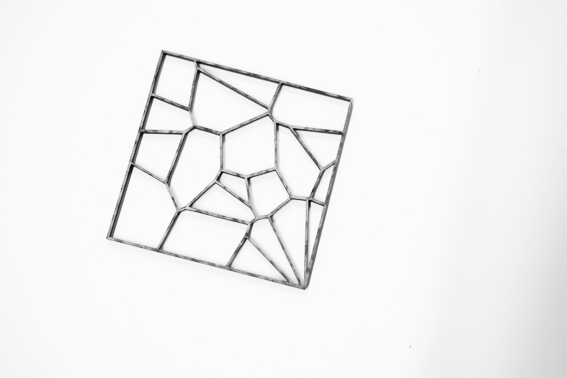Digital Fabrication HS 2021
Topic: Growth Processes
While designing digital products, we are already focusing on creating frameworks for dynamic content and individual outcomes. In this course, we will create frameworks, physically, to let nature interact with it and to invite people to alter and manipulate it.
Today, engineers, designers and artists are on the forefront to generate and design adaptive systems and new building strategies. Some example, silk worms are completing solid tensile scaffoldings, computationally engineered on their purposes. Or swarms of bees are incorporated in different objects and environments building honeycomb structures inside it. Honey could soon be modified, through genetically modifying the bee itself, into concrete or plastics to be applied in the environment. Are we facing bees in the future as builders of novel facades?
How do we sense, observe and adapt the huge variety of processes around us to design with? In this two-weeks hands-on course, we will observe like in a laboratory specific principles, geometries and materialities to create computationally aided new collaborative processes, like adapting the geometries of cellulose forcing capillaric forces to use for transportation processes or the thermal behaviour of stones for storing energy in the environment. Programming, CAD- and fabrication- tools should help to open up different phenomena for potential uses in design.
Key Topics
focus on human nostalgy, experiences and aesthetics incorporating digital fabrication
presenting n active processes within materials+environment (crystallizing+folding (on mech. force), melting-condensing-evaporating (on heat), healing (self-regulated), growth(on temp+humidity), absorbing-emitting (sound))
- reflect on human involvement/ finding equivalent active processes within/ nearby the human body+environment (walk+hit (mech. force), bodytemperature (on heat), sweating+breathing (on temp+humidity), )scream+speak (sound)
Digital fabrication is a process that merges design and manufacture through the use of digital tools (software) and computer controlled manufacturing processes. Such processes position "digital natives" in the forefront of craft and form generation. Today, engineers, designers and artists are leading the development of new sculpting, construction and manufacturing strategies. Methods such as CNC milling, laser cutting, robotic fabrication among others, allow us to materialise radical new forms inspired by biological processes, mathematics and computational geometry.
Lecturers: Verena Ziegler, Rasa Weber
Course Goals
In this course, students gain an insight into methods and techniques that blur the boundary between digital and analogue, virtual and physical. Students gain insights into principles from geometry and formation processes from nature. The course provides a number of skills that are highly transferable to various aspects of prototyping for interaction designers.
Course Structure
The course is Monday to Friday over two weeks, with the first week focuses on basic skills, and the 2nd week focuses on the main project. In the first week, students work individually or in groups of two to acquire basic skills. In the 2nd week, students form teams of 2 to 4 students to complete the main project.
Deliverables
- Individual Mini Projects
- 2 days workshop of technical drawing with mini exercises (Rasa Weber)
- Final Group Project and Presentation - (At the end of week 2)
- Documentation - Documentation of your work in the template provided (Per Group).
- Attendance during lessons
Contents
Time Plan
Room for the first week: ZT 3.E07-C Project room on the right
Room for the second week: ZT 3.E07-A
Expectations and Grading
Grades will be based on group presentations, class participation, documentation and final work. An attendance of min. 80% is required to pass the course.
- Individual Work and Documentation (week one)
- Group Work in the main project (week two)
Individual Work (40%)
- Workbook documentation of exercises and minor projects from week 1
Group Work (60%)
- Exhibition of process and outcomes
- Final Presentation
- Standard IAD Documentation
- Videos (Making of, Final Prototype) if appropriate
- Image selection
- Recipe Documentation in the template provided (PDF and original InDesign files)
Final Presentation notes:
- The exhibition of the workshop results will take place in 3.E07-A. The tables will be set up for this on Thursday afternoon.
- 5 minutes for presentation, and 5 minutes for feedback and discussion
- Live demonstration of your project when suitable
- Explanation of the process and the thinking that brought you to this outcome
